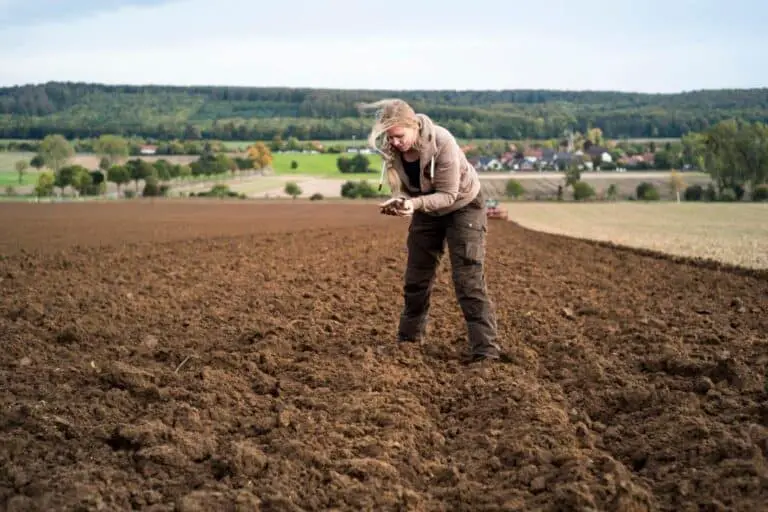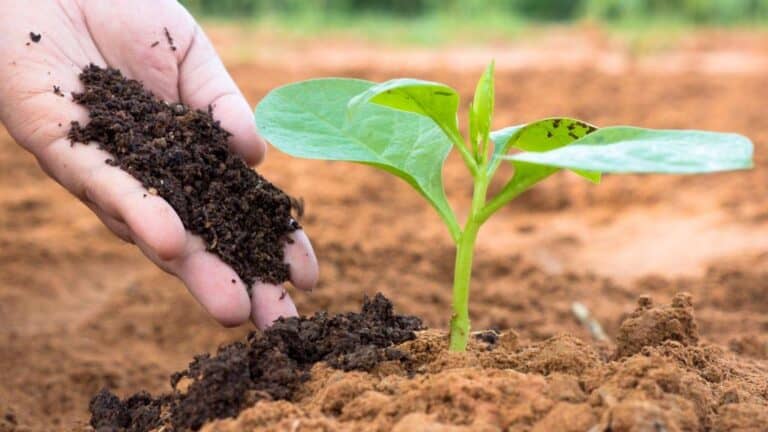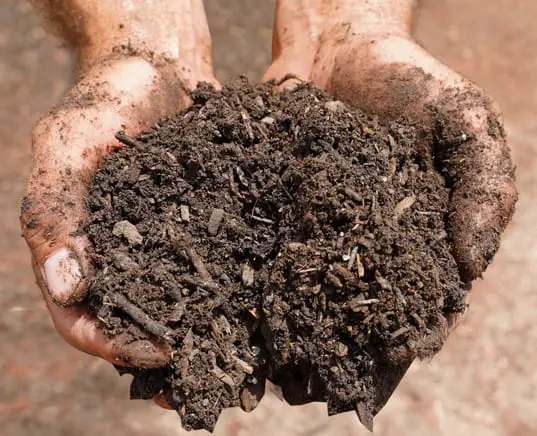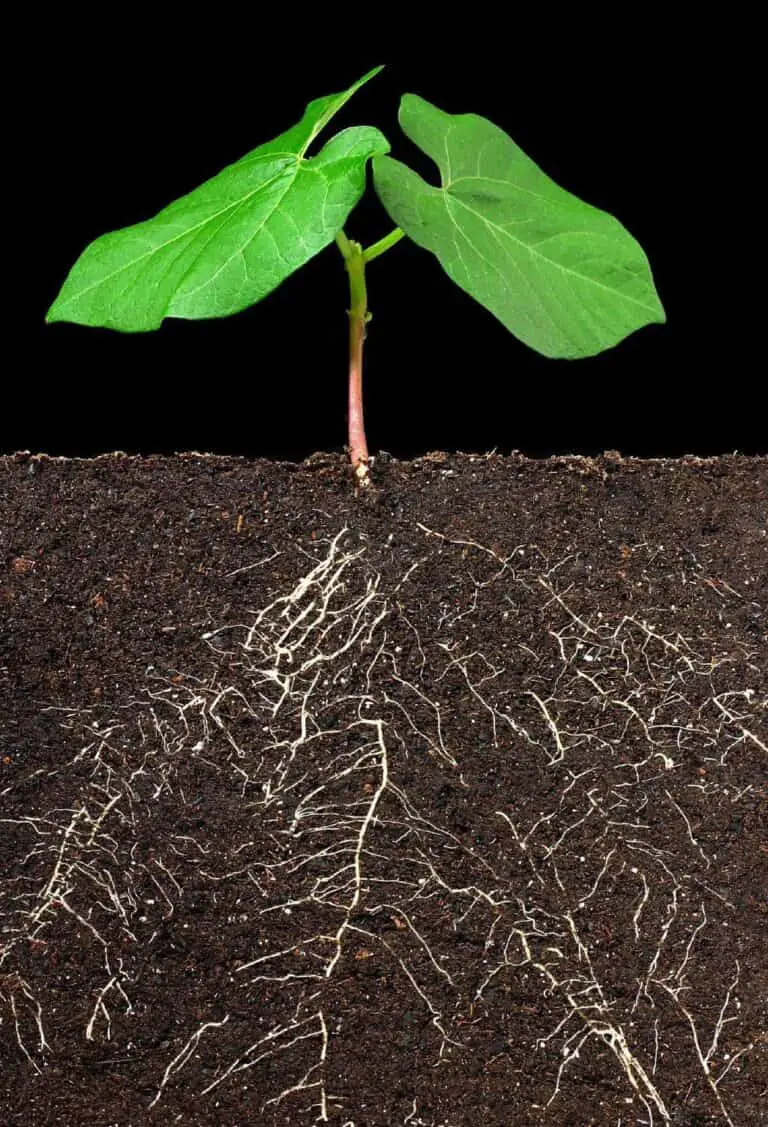Best Soil Conditions and pH Level for Planting Potatoes (Explained)
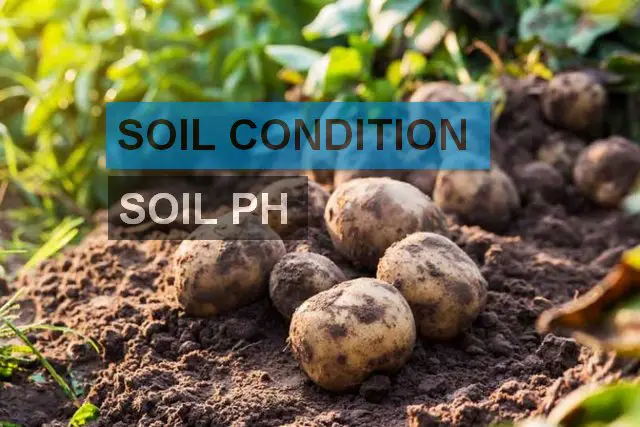
Ever wondered about the secret recipe for growing the perfect spuds in your backyard? Well, let’s talk about the unsung hero of potato cultivation – soil pH.
Soil conditions and the PH level are very important factors when it comes to growing potatoes. It is critical to find the best soil conditions for a bountiful potato harvest.
The best soil for planting potatoes is one that is light and has plenty of organic matter. This type of soil will help to keep the potatoes moist and will provide them with the nutrients that help potatoes grow.
Potatoes are heavy feeders and need regular feedings with an all-purpose fertilizer up until the time the plants start to flower.
We will discuss the ideal soil conditions and PH for planting your potatoes. If your soil is not up to par, you can amend it with some tips that we will discuss in this article.
So, grab your gardening gloves and join me on this soil safari. We’re about to explore the sweet spot that turns your garden into a potato paradise. No complex jargon, just straightforward tips for beginners looking to rock the potato-growing game. Get ready to unearth the secrets of the ideal soil pH level for planting potatoes – your spuds will thank you later!
What Is the Ideal Soil pH for Potato Planting?
Potatoes prefer acidic soil with a PH range from 4.8 to 5.5. This is especially important for commercial potato farmers, as the lower PH level keeps scab disease off of the potatoes.
A scab is a bacteria-like organism that can survive in the soil over the winter and will cause what looks like scabbing on the outside of the potatoes.
A scab will not cause your potatoes to rot, and you can safely peel it off the outside of the potato and still eat it, but commercial farmers cannot sell potatoes with scabbing on the outside. That is why they must maintain a low pH level in the soil where they grow their potatoes.
For a gardener, you’d do better to keep the PH level on the low side, around 4.8–5.5, but it will be fine anywhere in the range of 4.8–6.5.
Most of the time, limestone and wood ash are used to raise the PH level, and aluminum sulfate and sulfur are used to lower it. There are many more organic materials that will raise and lower PH, but they take a longer time to do so than commercially ground limestone and sulfur.
Whichever method you choose, changing soil PH levels takes a long time. Figure about a year of application and waiting to change the PH level 1 point in either direction. This is a 3-in-1 meter that tests soil PH, moisture level, and light level.
Best Soil Conditions for Planting Potatoes
Potatoes are a widely cultivated and popular food crop, and they can be grown in a variety of soil types. However, there are certain soil conditions that are particularly favorable for planting potatoes.
First and foremost, potatoes prefer a loamy, well-draining soil with a pH level between 5.0 and 6.5. Soils that are too acidic or too alkaline can inhibit potato growth. In order to achieve the optimal pH level, you may need to add lime or sulfur to your soil.
In addition to a high pH level, potatoes also thrive in soil that is rich in organic matter. By mixing compost or well-rotted manure into the soil, you can give potato plants the nutrients they need to grow strong and healthy.
Overall, the best soil conditions for planting potatoes are well-draining, with a balanced pH level, a rich organic matter content, and a loose, crumbly structure. By thinking about these things, you can make sure that your potato plants are growing and developing in the best way possible.
| Related: Can You Plant Directly Into Well-Rotted Manure? |
Loamy Soil Conditions Full of Organic Material for Planting Potatoes

Loose, crumbly soil is ideal for potatoes, as it allows for good root development and drainage. Loamy soil is a mixture of sand, silt, and water.
The mixture of these three soil types makes loamy soil, which has the perfect texture for plant growth. Good aeration, water drainage, and root growth are all possible thanks to the space that the various-sized particles create.
Compact or clay-like soil can restrict root growth and lead to poor plant development. Too much clay makes for soil that can hold water for too long or have impacted areas. Compacted soil makes it tough for plant roots to dig and reach the moisture and nutrients they need. If the soil doesn’t drain, there’s a chance for root rot.
Too much sand can lead to excessive drainage and soil that doesn’t hold enough water or nutrients to meet the plant’s needs.
What if Your Garden Soil Is Sandy or Clay-rich?
Well, the solution for soil that is too sandy or has too much clay is to add compost or organic material. Organic matter will help sand hold on to water better and make clay soil looser and better able to drain.
It’s a good idea to add compost before the season or after and work it into the soil. It’s ideal to add it in the fall so the organic material can break down more, and then work the soil up again in the fall to loosen it up before planting.
A good way to get large amounts of compost is to contact local city offices and see if they have compost piles you can access. Cities collect grass clippings and leaves and typically pile them somewhere in huge piles that the public has access to. The more mature and broken-down the compost is, the better.
Growing Cover Crops – More Ecologically Solution
Growing a cover crop is another good way to add organic material to your soil. This method significantly decreases or eliminates the requirement for synthetic fertilizers while also being beneficial for the environment and the soil food web.
Choosing Cover Crop Which is Suitable for Your Garden
Late in the season, towards the end of summer, plant turnip greens, soybeans, or rye grass. Legumes, cereals, grasses, or crucifers are also common cover crops.
Once the cold weather comes and kills the cover crop, work it into the soil. It should be broken down enough that you can wait until early spring to work it into the soil. It’s good to work it into the soil a couple of months before planting.
Organic material will add nutrients and cover crops, but to get good yields, you still need to add fertilizer to the mix.
Add Fertilizer for Growing Potatoes – Efficient Solution
Fertilizers are divided into two main groups: organic fertilizer and conventional fertilizer. You can choose one route or a combination of both. Whatever fertilizer you select will have a number format, such as 5-10-10.
These numbers represent N-P-K, or nitrogen, phosphorus, and potassium, which are the macronutrients plants need. A plant also requires micronutrients like magnesium, sulfur, and calcium.
There are two ways of applying fertilizer: broadcasting and side dressing.
- Broadcasting is spreading the fertilizer out evenly over the soil and then working the fertilizer into the top 3–4 inches of soil.
- Side dressing is done by placing the fertilizer 2-3 inches to the side of and just slightly deeper than where the seed potato will go. A combination of these methods is thought to be more effective than one method alone.
There are plenty of organic fertilizers available to add nutrition to the garden. My preferred organic fertilizer is Organic Plant Magic. It has more micronutrients and strains of beneficial soil bacteria than other brands.
With an N-P-K ratio of 20-20-20, Jack’s Classic is a good water-soluble standard fertilizer. This provides plenty of macronutrients for the garden and can be used in half strength as 10-10-10.
Follow the guidelines for application and amount for whatever fertilizer you choose to purchase. For Jack’s Classic, you can use half the amount and make it a 10-10-10 if you think your soil is already pretty good from compost and earlier fertilizing.
Switching to a fertilizer that has an N-P-K ratio of 1-2-2 at the flowering and tuber bulking phases is ideal.
Soil for Potatoes in Containers
The rules here are the same as above. Potatoes like loose, loamy soil full of nutrients, which can be provided through compost, which is broken down organic material, aged manure, or fertilizers. Potting soil can get expensive quickly, but it is nice because it has everything you need pre-mixed into it, so you don’t need fertilizer.
Good potting soils are Fox Farm Happy Frog Organic, Fox Farm Ocean Forest, Miracle-Gro Potting Mix, and Organic Plant Magic. These all contain enough nutrients to grow your potatoes without adding fertilizer. The Miracle-Gro is the only one above that is not organic.
Prepare the Soil for Planting Potatoes (Summary)
How well you prepare the soil has a big impact on how uniform your products are. Potato plants thrive in loose, loamy soil because they can grow and mature more freely. To increase the quality of your soil, you have two options.
The first thing to do is to add well-rotted compost two months before you plant potatoes. The second method is to sow a cover crop (leguminous) as green manure in the fall and plow the plants two months before planting potatoes in the following spring.
If your soil is getting worse because you keep growing potatoes there, you may need to fix the problem and talk to a licensed agronomist.
Potatoes need a lot of work done on the soil before they can be grown. Soil preparation begins 2-3 months before sowing seed potatoes in the winter (December). To get rid of weeds and pebbles and make the soil ready for the seeds, farmers frequently plow vigorously during this time. Before the soil is ready to plant, it usually needs three plowings, as well as some harrowing and rolling.
To provide loose, aerated soil for the potato plants, till your potato plot 12–18 inches below the ground. This is especially important in the early spring, when the soil has been cold and frozen stiff all winter.
Final Thought
To have a bountiful potato harvest, it is critical to plant your potatoes in the right sunlight needed and perfect soil. The best soil for planting potatoes is one that is light and has plenty of organic matter. This type of soil will help to keep the potatoes moist and will provide them with the nutrients they need to grow. If your soil is heavy and lacks organic matter, you can amend it by adding compost or other organic matter.
Potatoes prefer well-drained, slightly acidic soil with a pH of 5.5 to 6.5. A soil test can help you determine your soil’s pH level. If your soil is too acidic or alkaline, you can amend it with lime or sulfur to adjust the pH level for the best potato growth.
FAQs
What happens if the soil pH for potatoes is too high?
If the soil pH is too high (alkaline), potatoes may struggle to absorb essential nutrients like iron and manganese. This can lead to nutrient deficiencies, stunted growth, and lower yields. Adjusting the pH to a slightly acidic to neutral range (4.8 to 6.5) is crucial for optimal potato development.
Can I use household items to test soil pH for potatoes?
Yes, you can! Common household items like vinegar and baking soda can be used for a basic soil pH test. However, for accurate results, consider investing in a pH testing kit from a garden center.
How often should I test the soil pH for my potato garden?
Test your soil pH at least once a year, preferably before planting potatoes. If you’ve recently made pH adjustments, wait a few months before retesting to allow the soil to stabilize.
Is it possible to grow potatoes in slightly acidic soil?
Absolutely! Potatoes prefer slightly acidic to neutral soil (pH 5.8 to 6.5). In slightly acidic conditions, they efficiently absorb nutrients, promoting healthy growth and robust tuber development.
Can compost help regulate soil pH for potatoes?
Yes, compost can act as a natural buffer, helping to stabilize soil pH. Regularly adding compost to your potato garden contributes to overall soil health and can mitigate fluctuations in pH, creating a more favorable environment for potato cultivation.

